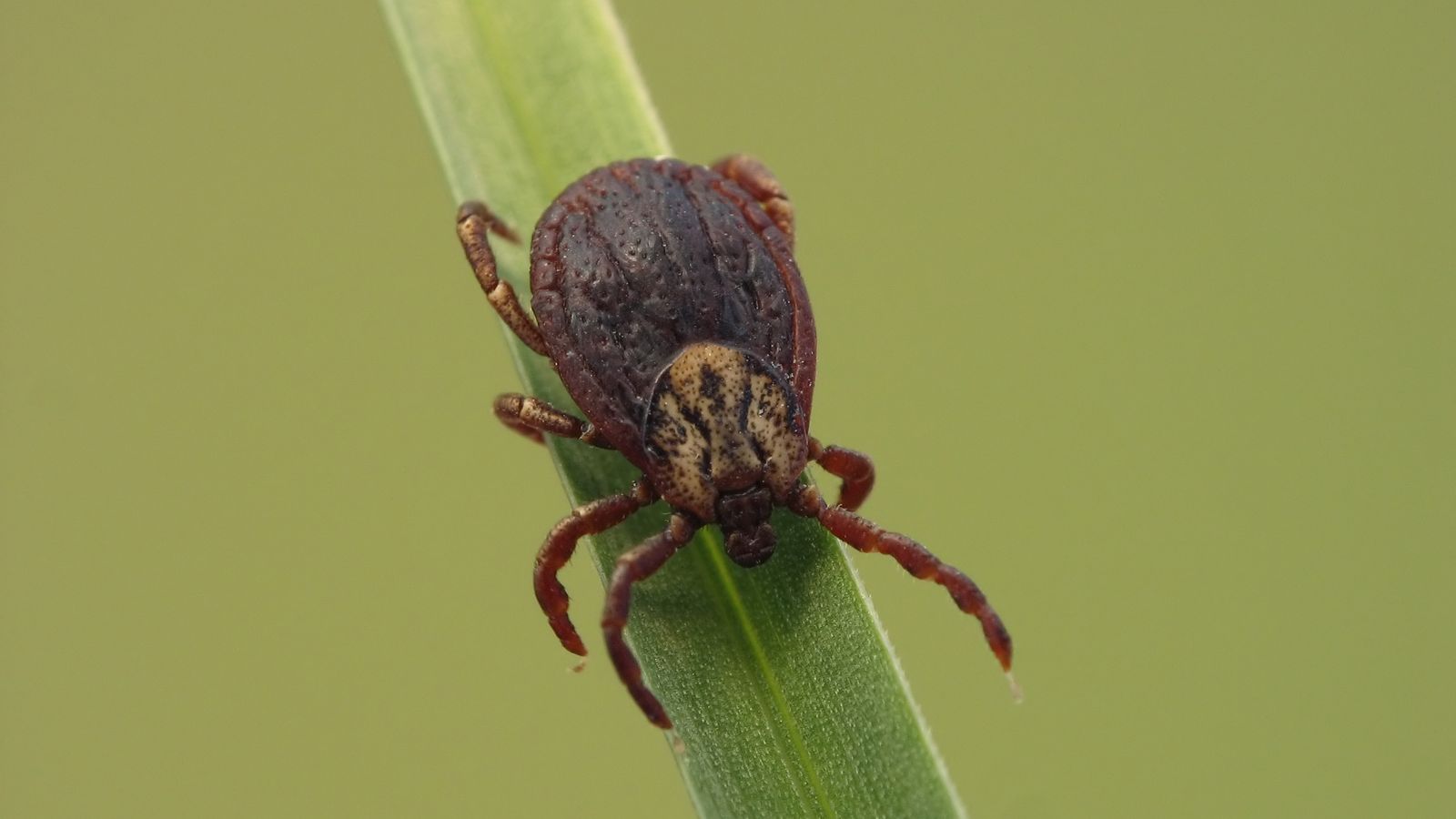Tick-borne encephalitis virus (TBEV) – a virus that can cause meningitis – has been detected in several parts of England.
TBEV is common in many parts of the world, including in countries in Europe, with it also being found in the Hampshire, Dorset, Norfolk and Suffolk border areas.
Although ticks can be found all over the UK, Dr Meera Chand, deputy director at the UK Health Security Agency (UKHSA) said the tick-borne encephalitis virus remained “very uncommon in the UK” and that the risk to the general population is “very low”.
There have been three cases of TBEV in England since 2019.
What is tick-borne encephalitis virus?
Tick-borne encephalitis virus (TBEV) is a virus carried by ticks.
Ticks are small blood sucking insects, which can be found all over the UK. They tend to reside on long grass, urban parks and gardens, according to the NHS.
They also live on the blood of animals, but also attach themselves to humans – this usually happens if humans or animals brush past them.
Ticks can stick around for a few days, feeding on human or animal blood, until they have been cleared by the host or until they drop off when they’re full.
TBEV can spread from a bite from an infected tick or from consuming unpasteurised dairy products from infected goats, sheep or cows.
People who are infected with TBEV carry flu-like symptoms such as feeling hot and cold, headaches, aching muscles and nausea.
Some people might also experience a circular red rash on their skin if bitten by the mite.
Severe symptoms of TBEV include:
• Stiff neck
• Pain when looking at bright lights
• Seizures
• Sudden confusion
• Weakness
Ticks can also cause other infections such as Lyme disease
Lyme disease is a bacterial infection that can be transmitted to humans after being bitten by a tick.
The symptoms of Lyme disease can develop at an early stage – this can be one to four weeks after being bitten and can appear between three to 30 days after exposure.
Here are some of the symptoms in the early stages:
• Fever
• Joint pains
• Headache
• Fatigue
• Headache
• Rash
Read more:
Tick-borne virus detected in several areas in England, UKHSA warns
The government’s website says that more serious symptoms may develop if Lyme disease if left untreated – these include:
• Swelling in the joints
• Issues that may affect the nervous system
• Meningitis
• Memory loss
• Concentration problems
• Bell’s palsy – a condition leading to temporary weakness or lack of movement affecting one side of the face
Be the first to get Breaking News
Install the Sky News app for free
Can Lyme disease and TBEV be treated?
GPs can provide a course of antibiotics for Lyme disease, with most people getting better over time.
Those with more severe symptoms may be sent to hospital so antibiotics can be given directly into a vein.
Meanwhile, the NHS says people can get vaccinated against TBEV and advises people to do so if they are travelling to a country where infection is common.
Two doses of the vaccine helps develop protection from the virus for about a year and a third injection can help protect against it for about three years.
The NHS says the risk of getting seriously ill from the virus is low – but asks those suffering with severe symptoms – such as a seizure – to call 999 or go to A&E immediately.
How can I avoid getting bitten?
The NHS says best way to avoid this would be to cover the skin while outdoors and to “tuck your trousers into your socks”.
Another method would be to use insect repellent on your skin and clothing – DEET, a chemical compound found in repellent’s can help with this.
Sticking to paths whenever possible while taking a stroll in the garden or the local park is advised in order to avoid getting bitten by the mites.
To help locate ticks easily, it is also advised that you wear light-coloured clothing. Once you spot them, you can easily brush them off!
How to remove ticks safely
To remove them, you’ll need a fine tipped tool such as tweezers or a tick removal device which can be found online and at local pharmacies.
Here’s the NHS’s advice on the best way to remove ticks:
1. Locate the area and hold the tick with the tool as close to your skin as possible.
2. Slowly pull the tool upwards, but be very careful and try not to squeeze or crush the tick.
3. Once you’ve removed the tick be sure to dispose of it.
4. Lastly, clean the area of the bite with antiseptic, soap or water.





